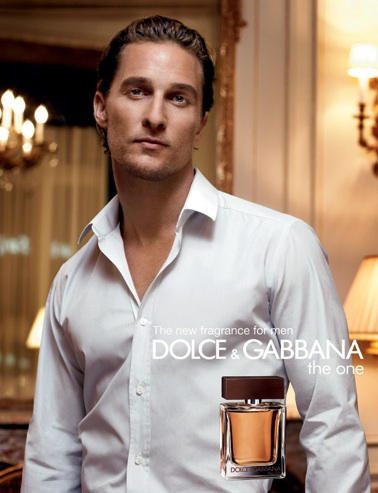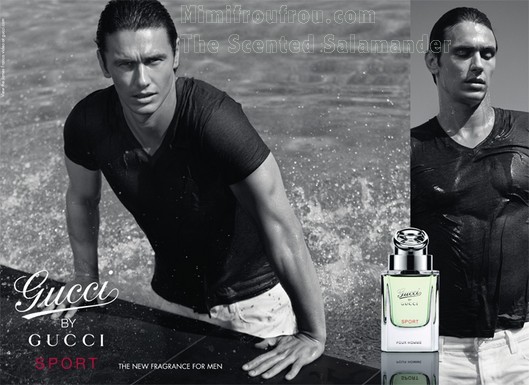Example of Male Perfume TV Advertising
Wednesday, 19 October 2011
Monday, 17 October 2011
Media Stereotyping - Men and Masculinity
"Media stereotypes are inevitable, especially in the advertising, entertainment and news industries, which need as wide an audience as possible to quickly understand information. Stereotypes act like codes that give audiences a quick, common understanding of a person or group of people—usually relating to their class, ethnicity or race, gender, sexual orientation, social role or occupation.
But stereotypes can be problematic. "
They can:
But stereotypes can be problematic. "
They can:
- reduce a wide range of differences in people to simplistic categorizations
- transform assumptions about particular groups of people into "realities"
- be used to justify the position of those in power
- perpetuate social prejudice and inequality
Men and Masculinity
"When I was born, they looked at me and said: 'What a good boy, what a smart boy, what a strong boy!' And when you were born, they looked at you and said:'What a good girl, what a smart girl, what a pretty girl!'"For several decades now, media critics and feminists alike have been examining the role of the media in creating and reinforcing stereotypical representations of women and femininity. But only recently have they expanded the research to consider how the media also construct, inform and reinforce prevalent ideas about men and masculinity.
"What A Good Boy," The Barenaked Ladies
Images of Men in Advertising
"This may seem like an odd question to be asking, but it's one that's answered all the time in print ads and television commercials. Ads and commercials, with their images of cowboys, successful businessmen, construction workers, sophisticates in tuxedos, muscle men and others, advertisements may seem to be flashing by casually. But they actually represent countless – if often unconscious– decisions by writers, advertisers, producers, programmers and others about what men look like, say and even think."
----------------------------------
Tom Nakayama is Professor of Communication and Director of Asian Pacific American Studies at Arizona State University. He is an affiliate faculty of Women's Studies and Justice and Social Inquiry. He has held visiting positions at the University of Iowa, University of Maine, and was a Fulbright scholar at the Universite de Mon-Hainaut in Belgium.
----------------------------------
Tom Nakayama is Professor of Communication and Director of Asian Pacific American Studies at Arizona State University. He is an affiliate faculty of Women's Studies and Justice and Social Inquiry. He has held visiting positions at the University of Iowa, University of Maine, and was a Fulbright scholar at the Universite de Mon-Hainaut in Belgium.
Thursday, 13 October 2011
Dead Set Research
While vampires and werewolves battle to be our favorite scary monsters, a new contender lurches into view. Zombies, already a movie and video-game staple, are infecting television this Halloween season with the arrival of AMC’s new series, “The Walking Dead,” on Sunday (Halloween night) and the unspooling this week of the British mini-series “Dead Set” on IFC.
As disturbing bulletins begin to pop up on the news about strange behavior and uncontrollable crowds, the reality show’s cast, locked inside its “house,” remains oblivious.
The satirical possibilities are abundant, and “Dead Set,” which was nominated for a Bafta (British Academy) award for best drama serial, deftly makes the connections between reality television and zombification. The screaming crowds that gather for the show’s “eviction” episode, waiting to taunt whichever cast member is voted out, become the zombies desperate to eat the housemates’ flesh. The show’s hateful producer (Andy Nyman) uses “Big Brother” psychology to manipulate a cast member into joining his escape plan. (“Do you know what they call you when you’re out of the room? Gollum.”)
That might make “Dead Set” sound like a comedy, but on balance it plays like a well-made and increasingly grim horror picture, with a crispness of execution and a graphic level of intestine-pulling, throat-ripping violence that are both beyond the American norm. The satire is underplayed and unforced, with the exception of Mr. Nyman’s profanity-spewing, over-the-top performance (which is, in its own right, quite funny). The zombies are not the traditional shufflers (as they are on “The Walking Dead”); they’re sprinters in the modern, more terrifying “28 Days Later” mode.
Some of the laughs — perhaps most of them — may be lost in translation, and not just because of the constant British slang. “Big Brother” has been a bigger deal in Britain than in the United States, and its rituals (the eviction show, the diary room) carried more cultural weight. (The show ended its 11-season run last month.)
Actual “Big Brother” cast members make cameo appearances in “Dead Set,” and one of the show’s hosts, Davina McCall, plays herself. She does so quite convincingly, as both a sharp-tongued television presenter and a blood-caked angry zombie trying to take a bite out of her producer. You can imagine how much fun that must have been for British viewers. We can only hope that someday Fox will let us see Ryan Seacrest beating down a door to get his teeth on Nigel Lythgoe. Now that would be entertainment.
The New York Times -
http://tv.nytimes.com/2010/10/25/arts/television/25dead.html
As disturbing bulletins begin to pop up on the news about strange behavior and uncontrollable crowds, the reality show’s cast, locked inside its “house,” remains oblivious.
The satirical possibilities are abundant, and “Dead Set,” which was nominated for a Bafta (British Academy) award for best drama serial, deftly makes the connections between reality television and zombification. The screaming crowds that gather for the show’s “eviction” episode, waiting to taunt whichever cast member is voted out, become the zombies desperate to eat the housemates’ flesh. The show’s hateful producer (Andy Nyman) uses “Big Brother” psychology to manipulate a cast member into joining his escape plan. (“Do you know what they call you when you’re out of the room? Gollum.”)
That might make “Dead Set” sound like a comedy, but on balance it plays like a well-made and increasingly grim horror picture, with a crispness of execution and a graphic level of intestine-pulling, throat-ripping violence that are both beyond the American norm. The satire is underplayed and unforced, with the exception of Mr. Nyman’s profanity-spewing, over-the-top performance (which is, in its own right, quite funny). The zombies are not the traditional shufflers (as they are on “The Walking Dead”); they’re sprinters in the modern, more terrifying “28 Days Later” mode.
Some of the laughs — perhaps most of them — may be lost in translation, and not just because of the constant British slang. “Big Brother” has been a bigger deal in Britain than in the United States, and its rituals (the eviction show, the diary room) carried more cultural weight. (The show ended its 11-season run last month.)
Actual “Big Brother” cast members make cameo appearances in “Dead Set,” and one of the show’s hosts, Davina McCall, plays herself. She does so quite convincingly, as both a sharp-tongued television presenter and a blood-caked angry zombie trying to take a bite out of her producer. You can imagine how much fun that must have been for British viewers. We can only hope that someday Fox will let us see Ryan Seacrest beating down a door to get his teeth on Nigel Lythgoe. Now that would be entertainment.
The New York Times -
http://tv.nytimes.com/2010/10/25/arts/television/25dead.html
Gender Representation - Overall Gender Research in Print Advertising
The website below has enabled me to develop a wider understanding of how gender is represented in print based advertising.
Subscribe to:
Comments (Atom)






